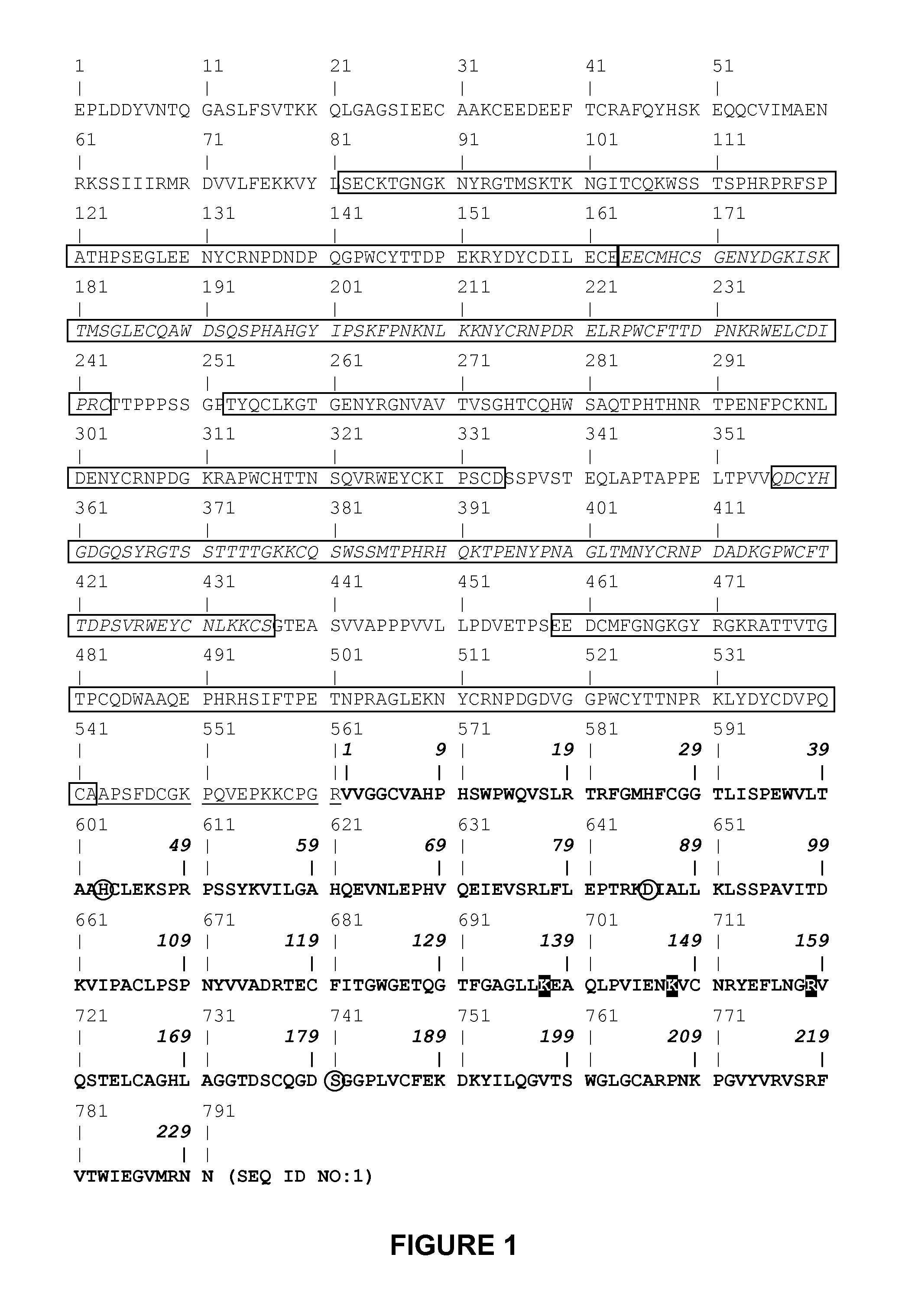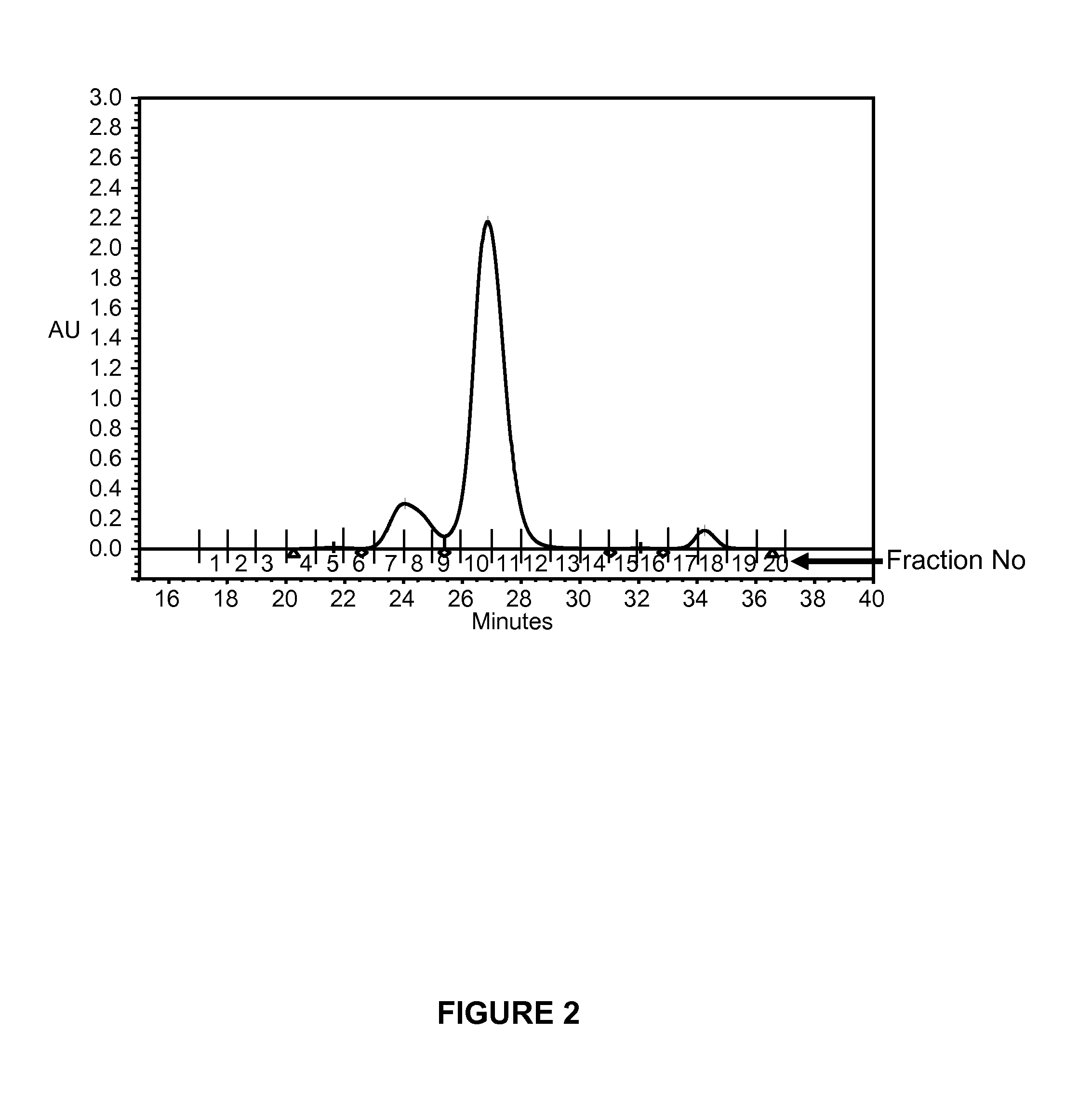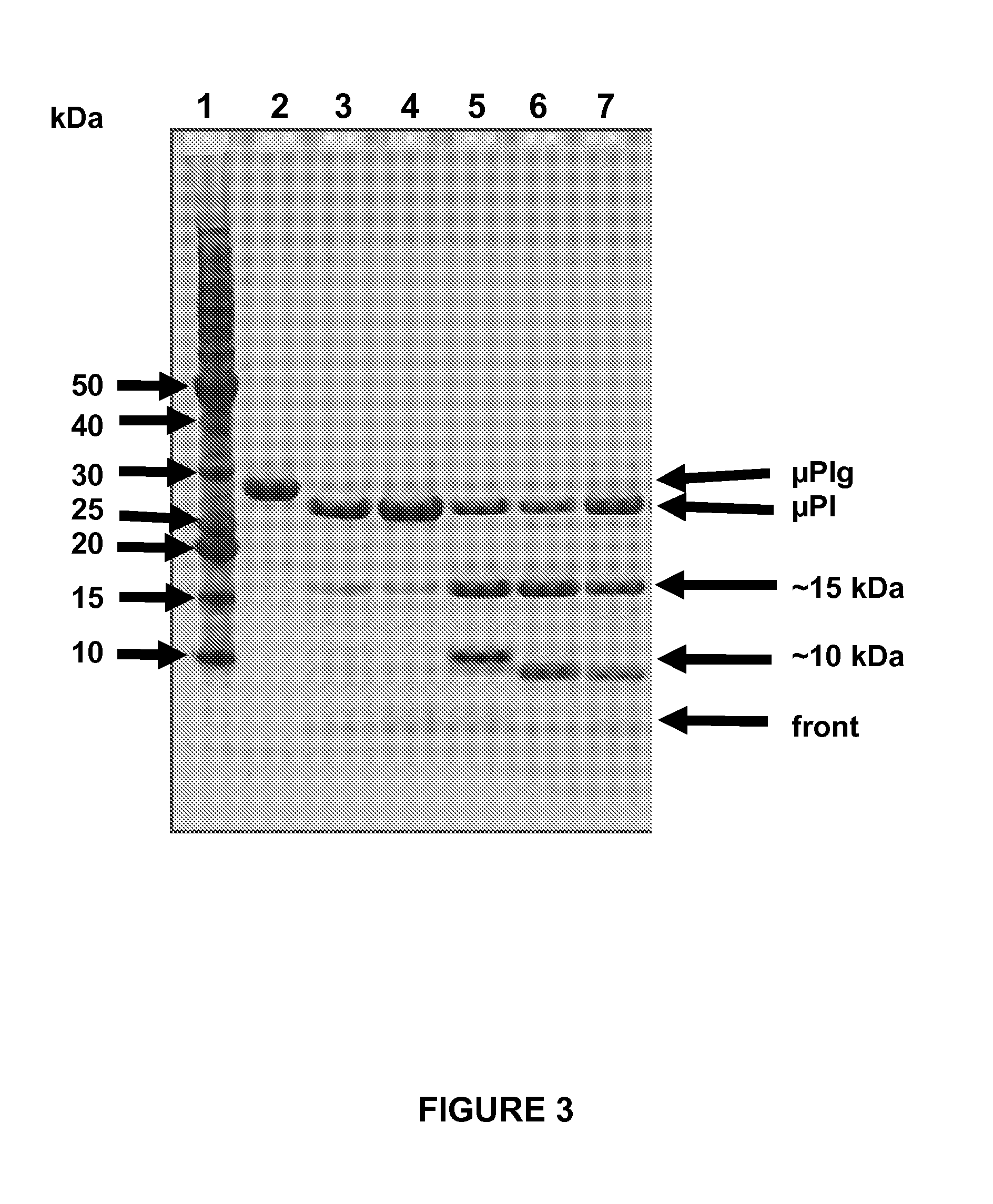Variants of plasminogen and plasmin
a technology which is applied in the field of variants of plasminogen and plasmin, can solve the problems of hampered direct use, and none of the above methods/variants solve the problem, and achieve the effect of enhancing the long-term storage stability of a plasmin-comprising composition, without significant loss of proteolytic activity
- Summary
- Abstract
- Description
- Claims
- Application Information
AI Technical Summary
Benefits of technology
Problems solved by technology
Method used
Image
Examples
example 1
Autodegradation of the plasmin catalytic domain and determination of peptide bonds in the plasmin catalytic domain which are sensitive to autoproteolysis
[0153]In order to study the mechanisms underlying the auto-inactivation of the proteolytic activity of plasmin, the inventor chose to focus on microplasmin which consists mainly of the catalytic domain of plasmin.
[0154]A typical size exclusion chromatography (SEC) profile of large-scale produced microplasmin is shown in FIG. 2. The eluates corresponding to fraction number 5 (pre-peak 1), fraction numbers 7&8 (pre-peak 2), fraction numbers 10-12 (microplasmin peak), and fraction numbers 15&16 (post-peak) were collected and the material therein subjected to N-terminal amino acid sequencing (Edman degradation). The peak eluting around fraction numbers 17-18 corresponds to the buffer peak. SEC was performed on an Amersham Bioscience Superdex 75 10 / 300 GL column connected to a Waters Alliance HPLC system. The column was equilibrated and ...
example 2
Construction, expression and purification of plasminogen variants and activation to plasmin
[0160]The pPICZaA secretion vector purchased from Invitrogen Corporation (Carlsbad, Calif.) was used to direct expression and secretion of recombinant human microplasminogen in Pichia pastoris.
[0161]This vector contains the secretion signal of the Saccharomyces cerevisiae a-factor prepropeptide. A XhoI recognition sequence is present at the COOH-terminus of the α-factor secretion signal, immediately upstream of the Lys-Arg site that is cleaved by Kex2 to remove the secretion signal from the mature protein. This XhoI restriction site may be used to clone the gene of interest flush with the Kex2 cleavage site by synthesizing the gene with the XhoI and Kex2 recognition sites at its 5′ end. The recombinant gene of interest will then be expressed with the native NH2-terminus. Engineered immediately downstream from the α-factor secretion signal in the pPICZaA vector is a multiple c...
example 3
Reduced Autoproteolyis of Plasmin Variants Compared to Wild-Type Plasmin
[0177]The purified microplasminogen mutants were first converted into the active microplasmin species using recombinant staphylokinase (SAK-SY162) or urokinase (Sigma). Briefly, the microplasminogen mutants (typically 5 to 20 μM in 25 mM sodium phosphate, pH 7.2) were incubated at 37° C. in the presence of staphylokinase (typical microplasminogen / staphylokinase ratio=50 / 1) or urokinase (typical microplasminogen / urokinase ratio=200), and the appearance of the active microplasmin species was followed by monitoring the hydrolytic activity against the chromogenic substrate S-2403 (used at a concentration of 0.3 mM), as described elsewhere. Once maximal activity was reached, the extent of microplasminogen conversion was assessed by SDS-PAGE and HPLC. Following activation, the autolytic reaction was monitored by measuring the loss of activity in the sample maintained at 37° C. Autolytic degradation was also visualized...
PUM
| Property | Measurement | Unit |
|---|---|---|
| pH | aaaaa | aaaaa |
| pH | aaaaa | aaaaa |
| concentration | aaaaa | aaaaa |
Abstract
Description
Claims
Application Information
 Login to View More
Login to View More - R&D
- Intellectual Property
- Life Sciences
- Materials
- Tech Scout
- Unparalleled Data Quality
- Higher Quality Content
- 60% Fewer Hallucinations
Browse by: Latest US Patents, China's latest patents, Technical Efficacy Thesaurus, Application Domain, Technology Topic, Popular Technical Reports.
© 2025 PatSnap. All rights reserved.Legal|Privacy policy|Modern Slavery Act Transparency Statement|Sitemap|About US| Contact US: help@patsnap.com



